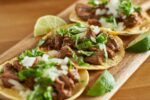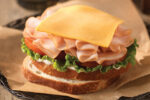While eggs and dairy ingredients like milk and cheese are commonly used in many pasta recipes, they are not essential components in traditional pasta. Pasta originated in Italy during the Middle Ages as a simple food made with durum wheat flour or semolina and water. The primary ingredients in traditional pasta remain durum wheat and water, with salt as an optional seasoning. Eggs and dairy products are sometimes added to impart richer color, texture and flavor but pasta made with just wheat flour and water remains standard.
Therefore, pasta is first and foremost a wheat product, not a dairy food. For those who need egg-free options, pasta can still be made using flour, water and Olive oil or plant-based egg substitutes.
Origins of Pasta
Pasta in its current form originated in Italy during the 13th and 14th centuries, evolving from earlier varieties of noodles that date back to ancient Rome.
Initial forms of pasta were quite simple, made with just durum wheat flour or semolina and water. There are records from this period describing pasta dishes accompanied by sauces but without any mention of eggs or dairy.
As pasta gained popularity, recipes and shapes became more varied and complex. However, the basic ingredients remained durum wheat and water, reflecting pasta’s origins as an affordable, filling food made from readily available agricultural products in Italy.
Pasta was considered peasant food for many centuries, eaten regularly by the lower and working classes in Southern Italy in particular. The simplicity of the primary ingredients – durum wheat flour and water – made pasta accessible to many.
Over time, eggs and dairy products like milk, cheese and butter were gradually incorporated into some pasta recipes primarily for enhanced flavor, color and texture. But traditional pasta made solely from durum wheat and water remains the most essential form, reflective of its origins in medieval Italy.
Traditional Pasta Ingredients
The two primary ingredients that have been used to make pasta since its origins in Italy during the Middle Ages are durum wheat flour or semolina and water. Salt is also a common but optional ingredient in traditional pasta.
Durum wheat flour and semolina are the main sources of carbohydrates, protein and gluten in pasta dough. The flour is made from grinding durum wheat, a hard variety of wheat that is high in protein and particularly suited to pasta production. The high protein content enables the flour to form an elastic dough when combined with water.
Semolina is a coarse flour made from durum wheat. It is often used to make dried pasta shapes since the larger particles do not easily clump together. The starch in both durum flour and semolina gelatinizes and absorbs water during cooking, resulting in the proper al dente texture of pasta.
Water is essential to combine with the durum flour or semolina to form the dough from which pasta is made. The correct ratio of water to flour – typically around 30 to 40 percent water by weight – produces a dough that is neither too dry and crumbly nor too sticky and difficult to work with.
Salt is a common but optional ingredient in traditional pasta, used primarily to enhance the flavor. One to two percent salt by weight of flour is typical for pasta dough. While salt helps stabilize gluten formation, unaided durum flour and water can already form a workable dough.
Therefore, the most essential ingredients that define traditional pasta and have been used since its early history are durum wheat flour or semolina and water. Salt is an optional flavoring agent but not a primary ingredient necessary for simple pasta production. The egg and dairy additions that later became common in some pasta recipes are secondary to this foundational pasta ingredient combination.
The Roles of Eggs and Milk in Pasta
While durum wheat flour or semolina and water constitute the essential ingredients for making traditional pasta, eggs and dairy products like milk and cheese are also commonly used in many modern pasta recipes. These additions primarily serve to enhance certain sensory qualities of the pasta.
Eggs are most frequently used, typically one whole egg or equivalent per 100 grams of flour. Eggs perform several roles within pasta dough.
First, they act as a binder that helps hold the flour particles together, improving cohesion and the integrity of the pasta sheet or shape when rolled or cut.
Second, eggs enrich the color of pasta, contributing yellow pigments that produce a more aesthetic golden hue. This color change is especially noticeable in egg yolk due to its higher concentration of carotenoids.
Third, eggs lend pasta a richer, more elastic texture. The proteins in egg whites and yolks strengthen gluten formation, allowing the pasta dough to stretch further during shaping and producing a bouncier, slightly chewier end result.
Milk and butter are sometimes used instead of or in addition to eggs. The fat and protein in these dairy ingredients can also improve bind, color and texture to varying degrees. Cheese, most commonly ricotta or Parmigiano Reggiano, is less commonly added but can impart a savory flavor.
Dairy products can enable use of slightly less water within the dough, concentrating the flavor of the wheat. However, they tend to produce pasta that is less elastic and chewy compared to egg pasta due to containing different types of proteins.
Overall, eggs contribute the most prominent benefits to pasta in terms of bind, color and texture when used within recipes. But dairy products like milk, cheese and butter can also boost certain qualities, though usually to a lesser extent. Both eggs and dairy primarily enhance the sensory characteristics of pasta rather than serve as fundamentally essential ingredients on par with durum wheat and water. Their inclusion is a matter of preference for home cooks and restaurants seeking to differentiate or elevate particular pasta dishes.
Dairy is Not Essential to Pasta
While eggs and dairy ingredients like milk, cheese and butter are commonly used in modern pasta recipes to enhance color, flavor and texture, they are not essential components of traditional pasta. Pasta originated and remains first and foremost a wheat product made primarily from durum wheat flour and water.
Pasta made solely with durum wheat and water, without any eggs or dairy, has remained a staple in Italian cuisine for centuries. This simple pasta combination reflects how pasta first developed as an affordable food for lower class Italians using only readily available agricultural products.
The addition of eggs and dairy to some pasta recipes came later and primarily served to differentiate different types of pasta or elevate dishes for more special occasions. But traditional pasta made with just durum wheat flour, water and optional salt still forms the basis of pasta as a food.
Durum wheat flour and water alone are capable of producing pasta dough that can be shaped into various forms and cooked to the proper al dente texture. While eggs and dairy can improve certain qualities, they are not inherently necessary to make good quality, enjoyable pasta.
Even top chefs and restaurants frequently offer egg-free pasta options that use only durum wheat flour, water and salt. These more traditional pasta dishes demonstrate that the wheat ingredients alone can produce satisfying results once properly cooked and paired with the right sauce.
In conclusion, pasta is first and foremost a wheat product derived from durum flour and water. The later introduction of eggs and dairy enhanced some pasta varieties but remained optional additions rather than fundamental ingredients. Traditional pasta made with just durum wheat flour, water and salt remains prevalent and demonstrates that eggs and dairy are non-essential in producing good quality pasta dishes. Therefore, while eggs and dairy frequently feature prominently in modern pasta recipes, they do not actually define pasta as a food the way the wheat components do.
Alternatives to Egg Pasta
For those who need to avoid eggs in their diets, there are several alternatives that allow them to still make and enjoy pasta.
The simplest egg-free pasta option uses durum flour or semolina, water and a little oil as a binder instead of eggs. For each egg required in the original recipe, add about 1 teaspoon of olive oil or vegetable oil to the flour and water. The oil coats the flour particles and enables them to stick together sufficiently during shaping and cooking.
Plant-based “egg” replacers intended for baking can also work as egg substitutes for some pasta recipes. Products like Ener-G Egg Replacer, flaxseed egg, chia seed egg and homemade aquafaba (chickpea brine) can perform similar functions as chicken eggs within pasta dough. They generally require combining the replacer with water according to package directions before mixing with the flour.
Commercially produced egg-free pasta is also widely available, including options from major brands and specialty gluten-free or allergen-friendly brands. These pastas often use different starch flours or gums instead of eggs as binders to hold the shape during manufacturing and cooking.
For homemade egg-free pasta, durum flour or semolina, water and a little oil produce results that may be somewhat drier and less elastic compared to egg pasta. However, when properly cooked al dente and paired with the right sauce, the taste and texture can still satisfy most people. Some plant-based egg substitutes may come closer to replicating traditional egg pasta, depending on the specific recipe and brand used.
In summary, while eggs contribute beneficial qualities to many pasta recipes, they are not inherently essential. Durum wheat flour, water and a neutral oil provide a simple baseline for producing egg-free pasta. Various plant-based egg replacers and commercially produced options also expand the options for those who need or prefer pasta without chicken eggs.
In conclusion, while eggs and dairy ingredients like milk, cheese and butter are commonly used additions in modern pasta recipes, they are not essential components in traditional pasta. Pasta originated as a simple wheat food made from durum flour and water in Italy. The wheat components remain the fundamental ingredients that characterize pasta, whereas eggs and dairy serve primarily to enhance qualities like color, flavor and texture. Therefore, pasta is defined first and foremost as a wheat product, not a dairy food. Egg-free and dairy-free pasta alternatives are also widely available.
FAQs
- What are the main ingredients in traditional pasta? Durum wheat flour or semolina and water.
- Does pasta contain dairy? Some pasta recipes include dairy products but they are not essential.
- Can you make pasta without eggs? Yes, alternatives like oil, plant-based eggs and commercially produced egg-free pasta are available.
- When were eggs first added to pasta recipes? Eggs became common additions to pasta recipes gradually over time after pasta’s initial development.




